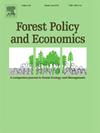东南亚树木和森林健康行动者的生物安全问题代表
IF 3.8
2区 农林科学
Q1 ECONOMICS
引用次数: 0
摘要
树木和森林生物安全政策和做法正在不断发展,以应对不断变化和日益增长的威胁。虽然很多研究反映在解决生物安全问题的文献中,但关于如何表现这个问题的文献却很少。我们分析了东南亚国家的研究人员、检疫和政府官员如何代表树木和森林生物安全问题。我们发现,最重要的是保护树木和森林免受病虫害威胁的问题,这种威胁是由货物和人员的跨境流动所驱动的,目的是为了社会和生态利益。在这个问题的表象中,存在着对技术和管理挑战的详细阐述——我们称之为“内部”问题。然而,抛开这些内部问题,我们发现在问题表征中较少涉及上下文问题——“外部”问题。这些生物安全问题的社会、经济和政治方面的外部问题对于理解生物安全的核心困境至关重要,即在管理病虫害传播风险的同时进行贸易和人员流动。仅仅将生物安全表述为一个技术和管理问题,就巩固了生物安全仅是专家问题的观念。在这里,我们认为,当越来越多的生物安全研究和政策讨论指出需要在生物安全系统中建立关系的、网络化的和共同的责任时,这种代表性应该受到挑战。关注生物安全是如何在内部和外部出现问题的,为支持决策者和从业者发展多样化的森林生物安全社会网络提供了机会。本文章由计算机程序翻译,如有差异,请以英文原文为准。
Biosecurity problem representation(s) by tree and forest health actors in Southeast Asia
Tree and forest biosecurity policies and practices are evolving in response to changing and growing threats. While much research is reflected in the literature on solving the problem(s) of biosecurity, less has been written about how the problem is represented. We analysed how the problem of tree and forest biosecurity is represented by researchers, quarantine and government officials in Southeast Asian countries. Foremost, we find, is a problem representation of protecting trees and forests from pest and disease threats, driven by the movement of goods and people across borders, for social and ecological benefits. Inside this problem representation there is an elaboration of technical and administrative challenges—what we call ‘inner’ problems. Away from these inner problems, however, we find less engagement with contextual issues in the problem representation—‘outer’ problems. These outer problems of social, economic and political aspects of the biosecurity problem are pivotal to understanding biosecurity's central dilemma, that is, conducting trade and movement of people while managing the risk of pest and disease spread. Representing biosecurity as a technical and administrative problem alone consolidates the idea of biosecurity as a problem only for experts. Here, we argue this representation should be challenged when a growing body of biosecurity research and policy discussion points to the need for relational, networked and shared responsibilities in biosecurity systems. Paying attention to how biosecurity is problematised, inner and outer, provides an opportunity to support policymakers and practitioners in developing diversified forest biosecurity social networks.
求助全文
通过发布文献求助,成功后即可免费获取论文全文。
去求助
来源期刊

Forest Policy and Economics
农林科学-林学
CiteScore
9.00
自引率
7.50%
发文量
148
审稿时长
21.9 weeks
期刊介绍:
Forest Policy and Economics is a leading scientific journal that publishes peer-reviewed policy and economics research relating to forests, forested landscapes, forest-related industries, and other forest-relevant land uses. It also welcomes contributions from other social sciences and humanities perspectives that make clear theoretical, conceptual and methodological contributions to the existing state-of-the-art literature on forests and related land use systems. These disciplines include, but are not limited to, sociology, anthropology, human geography, history, jurisprudence, planning, development studies, and psychology research on forests. Forest Policy and Economics is global in scope and publishes multiple article types of high scientific standard. Acceptance for publication is subject to a double-blind peer-review process.
 求助内容:
求助内容: 应助结果提醒方式:
应助结果提醒方式:


